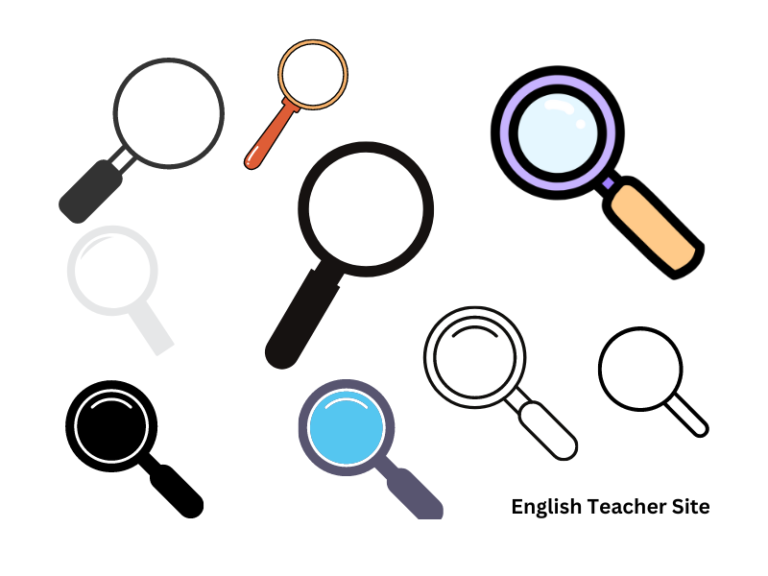What Are Regular and Irregular Plural Nouns: A Guide to Understanding English Grammar

- Regular plural nouns usually add an “s” or “es,” while irregular plurals have unique changes.
- Irregular nouns may change vowels, keep the same form, or alter entirely.
- Understanding pluralization rules is crucial for proper language use in both speaking and writing.
Irregular plural nouns can be challenging because they do not adhere to a single rule. Some change vowels, others retain their singular form, and some even change completely. For example, “foot” becomes “feet,” and “child” becomes “children.” It’s important to recognize these exceptions to the language norm because they are common in everyday speech and writing. Knowing the patterns, which can arise from old English or from other languages that have influenced English over the centuries, is invaluable for both native speakers and those learning English as a second language.
Unveiling Nouns: The Basics
As the core components of speech, nouns name people, places, things, and ideas, setting the stage for further exploration into their singular and plural forms.
Defining Nouns
Nouns are categorically identified by their ability to represent the aforementioned entities within sentences. Here is a brief representation of the different types of nouns:
- Proper nouns: Names specific entities (e.g., London, Martha)
- Common nouns: Refers to general items or concepts (e.g., city, happiness)
- Concrete nouns: Denotes physical objects (e.g., table, water)
- Abstract nouns: Signifies intangible concepts (e.g., freedom, love)
To illustrate nouns in a sentence structure:
| Subject | Verb | Object |
|---|---|---|
| The cat | sits | on a mat |
| Happiness | is | fleeting |
The table above emphasizes nouns both as subjects and objects, revealing their integral role in sentence construction.
Through these straightforward definitions and examples, one can begin to appreciate the complexity and vitality of nouns in English grammar.
The Eight Parts of Speech
In English grammar, the parts of speech are the building blocks of sentences, each with a specific role and function.
Identifying Parts of Speech
Below is a concise overview of each part of speech:
| Part of Speech | Function | Examples |
|---|---|---|
| Noun | Names a person, place, thing, or idea | book, London, happiness |
| Pronoun | Replaces a noun | she, they, it |
| Verb | Expresses action or being | run, is, seem |
| Adjective | Modifies a noun or pronoun | blue, quick, happy |
| Adverb | Modifies a verb, adjective, or another adverb | quickly, very, well |
| Preposition | Shows the relationship between a noun/pronoun and another word | on, at, by |
| Conjunction | Connects words, phrases, or clauses | and, but, or |
| Interjection | Expresses strong emotion | oh, wow, ouch |
To further illustrate, consider the following simple sentence: “The quick brown fox jumps over the lazy dog.” Here, “The” and “brown” are adjectives modifying “fox,” a noun. The word “jumps” is a verb describing the action taken by the fox. “Over” is a preposition showing the relationship between the verb “jumps” and the noun “dog.” The phrase “the lazy dog” once again includes “the” as an adjective and “dog” as a noun, with “lazy” being another adjective describing the noun.
Identifying the parts of speech within context requires practice and a strong grasp of their characteristics:
- Nouns can often be spotted by their role as subjects or objects in sentences and can be modified by adjectives.
- Pronouns stand in for nouns to avoid repetition and must agree in number and gender with the nouns they replace.
- Verbs are the heart of a sentence’s predicate and can be either actions or states of being. Verb tense indicates the time of the action or state.
- Adjectives are used to describe or quantify nouns or pronouns and usually answer questions like “which?”, “what kind of?”, and “how many?”.
- Adverbs often end in “-ly” and modify verbs, adjectives, and other adverbs, answering questions like “how?”, “when?”, “where?”, and “to what extent?”.
- Prepositions begin prepositional phrases, which typically include a preposition and its object. The object is always a noun or pronoun, and the phrase functions as an adjective or adverb.
- Conjunctions can be coordinating, subordinating, or correlative. They help structure sentences by linking words and phrases.
- Interjections are standalone words that can convey emotion and can be followed by exclamation points.
Note the following bullet points for additional clarity:
- Nouns and pronouns are often the main subjects and objects in sentences.
- Verbs express the essential action or state of being in clauses.
- Adjectives and adverbs provide detail and describe attributes of nouns and actions.
- Prepositions, conjunctions, and interjections function as connectors and expressions within sentences.
Differentiating Plural and Singular Forms
Singular nouns refer to one entity, whereas plural nouns indicate multiple entities. The transformation from singular to plural form can be regular or irregular.
Regular plurals typically involve the addition of an -s or -es to the singular form. For example:
| Singular | Plural |
|---|---|
| book | books |
| fox | foxes |
Irregular plurals, on the other hand, do not follow a consistent pattern and can change in various ways or not change at all when pluralized.
Irregular Plural Examples:
- Some change vowels: man to men
- Some change the word: child to children
- Some remain the same: sheep to sheep
Regular Plural Formation Rules
To form the regular plurals:
- Add -s to the end of the noun (dog/dogs).
- If a noun ends in -s, -ss, -sh, -ch, -x, or -z, add -es (bus/buses).
- For nouns ending in a consonant plus -y, change the -y to -ies (lady/ladies).
Irregular Plural Formation Patterns
Irregular plurals can be categorized:
- Vowel changes: Some nouns replace a vowel to form the plural.
Singular Plural tooth teeth foot feet - Unchanged nouns: Some nouns have the same singular and plural.
Singular Plural deer deer species species - Irregular endings: These include various alterations and completely different forms.
Singular Plural mouse mice person people
Regular and Irregular Plural Nouns
In English, nouns can be categorized based on how they form their plural. Plurals are generally needed when referring to more than one of the same object or concept. There are two types of plural nouns: regular and irregular.
Regular plural nouns are those that follow a standard pattern. They typically form their plural by adding an “-s” or “-es” to the end of the singular noun. Examples include “desk” to “desks” and “church” to “churches.” Here’s how the plurals are typically formed:
| Singular | Plural | Rule Applied |
|---|---|---|
| car | cars | Add “s” |
| box | boxes | Add “es” for -s, -sh, -ch, -x, -z ending |
| baby | babies | Replace “y” with “ies” |
Conversely, irregular plural nouns do not follow these standard conventions and can change in various ways. Often, these changes are due to historic usage and language evolution or are carried over from other languages. Common patterns include changing vowels, changing the word, or adding a different ending.
| Singular | Plural | Example of Change |
|---|---|---|
| child | children | Change in vowel and suffix |
| criterion | criteria | Change in word ending (-on to -a) |
| mouse | mice | Complete change in vowel |
Understanding these patterns helps in mastering correct English grammar.
Some irregular plurals, such as “foot” to “feet” or “person” to “people”, are commonly used in everyday language, making it crucial for learners to memorize and recognize them.
Bullet points of key considerations include:
- Regular plurals add “-s” or “-es”
- Irregular plurals often involve a vowel change
- The standard rules apply mainly to words of Anglo-Saxon origin
- Words from Latin or Greek may retain their original plural form (e.g., “radius” to “radii”)
Overview of Regular Plural Nouns
In the English language, regular plural nouns are those that conform to the standard rules of pluralization. These rules are fairly straightforward: one modifies the singular form of a noun to indicate that there is more than one of the item or concept in question.
Basic Rule of Pluralization:
- Add an -s to the end of the singular form.
- Example: “dog” becomes “dogs”.
However, there are a few variations to this rule based on the ending of the singular noun:
| Singular Ending | Rule for Pluralization | Plural Example |
|---|---|---|
| -ch, -sh, -s, -x, -z | Add -es | “witch” becomes “witches” |
| -y (preceded by a consonant) | Change -y to -i and add -es | “city” becomes “cities” |
| -o (some cases) | Add -es | “tomato” becomes “tomatoes” |
Exceptions with -o:
Some nouns ending in -o simply take an -s with no additional -e. This is particularly true for musical terms and others that have become fully anglicized.
- Example: “piano” becomes “pianos”.
Regular Plural Patterns:
- Nouns ending in -f or -fe may change to -ves.
- Example: “knife” becomes “knives”.
Unconventional Plurals: Irregular Plural Nouns
Irregular plural nouns are words that don’t follow the standard rules for becoming plural. Unlike regular plurals, which typically just add -s or -es, irregular plurals often change the word entirely or maintain the same form. Learning these exceptions is crucial for mastering English grammar.
Most nouns in English are made plural with the addition of -s or -es. However, several high-frequency nouns have irregular plurals. The origins of these forms are various, frequently historic linguistic influences or patterns that trace back to earlier forms of English or other languages like Latin.
Examples of irregular plural nouns include:
- The word for a single male adult is “man,” but when referring to more than one, it transforms to “men”.
- “Child” becomes “children”, not “childs”.
| Singular | Irregular Plural |
|---|---|
| Woman | Women |
| Mouse | Mice |
| Cactus | Cacti |
Some irregular plural nouns remain the same in both singular and plural forms:
- “Sheep” remains “sheep” whether talking about one or multiple animals.
- “Species” keeps its form regardless of its singular or plural use.
| Singular/Plural | Noun |
|---|---|
| Sheep | Sheep |
| Deer | Deer |
Here are some patterns within irregular plurals:
- Nouns ending with
-for-feoften change to-ves: leaf to leaves. - Some change vowels, like foot to feet.
- Others add
-en, such as ox to oxen.
I-Mutation/I-Umlaut in Plurals
In the English language, the concept of I-mutation or I-umlaut is instrumental in understanding the transformation of words from singular to plural form. This linguistic phenomenon occurs when a vowel in a word changes to a different vowel sound due to the influence of a following “i” or “y” sound in a suffix in the original Germanic languages. This change often affects how nouns are pluralized.
Examples of I-Mutation in Nouns:
| Singular | Plural |
|---|---|
| Man | Men |
| Woman | Women |
| Foot | Feet |
| Tooth | Teeth |
| Goose | Geese |
| Louse | Lice |
| Mouse | Mice |
These nouns exemplify irregular plural forms where the root vowel’s change in the plural form is a direct result of I-mutation. Additionally, this phenomenon is not limited to nouns but also extends to comparative and superlative forms of adjectives and derivative verbs.
Further Illustrations:
- Comparative/Superlative:
- Old becomes older and oldest, where the “o” is impacted by the “e” in the suffixes.
- Derivative Verbs:
- The verb fill is derived from full, heal from whole, showing the same mutational effect.
The I-mutation has historical significance in the evolution of English and is indicative of the language’s Germanic roots. These irregular patterns stem from phonological changes over the centuries that are preserved in modern English. Although these irregularities can seem daunting, they follow an internal logic traceable back to their etymological origins, which are further detailed on Etymonline and academically discussed on pages like Wikipedia.
Irregular Plurals Ending in -f/-fe
When teaching English grammar, it becomes evident that not all nouns follow the simple rule of adding an “s” to form their plural. A particularly interesting group is nouns that end in “-f” or “-fe”. These nouns often produce irregular plurals by changing “-f” or “-fe” to “-ves”.
Below are tables showcasing examples of this transformation:
Single to Plural Changes for -f Endings
| Singular | Plural |
|---|---|
| calf | calves |
| elf | elves |
| half | halves |
| knife | knives |
| leaf | leaves |
| life | lives |
| loaf | loaves |
| thief | thieves |
| wolf | wolves |
Single to Plural Changes for -fe Endings
| Singular | Plural |
|---|---|
| wife | wives |
| life | lives |
For instance, “roofs” and “chiefs” do not change to “rooves” or “chieves”. Irregular plural forms in English can be perplexing due to these exceptions.
Here are some points to remember:
- The switch to “-ves” typically happens with mono-syllabic words.
- Words ending in “ff” will simply take an “s” in the plural form, e.g., “sheriffs”.
- Always pay attention to the word’s origin, as it can be a hint towards its correct pluralization.
Employing these rules effectively requires practice and memorization. Through consistent exposure and usage, learners can develop a natural sense for choosing the correct irregular plural forms.
Irregular Plurals Ending in -us
In the English language, most nouns are made plural by simply adding an -s or -es to the end. However, some nouns, especially those that have been borrowed from Latin, have retained their original plural forms, often ending in -us. These are known as irregular plurals.
Consider the table below, which illustrates common nouns ending in -us and their irregular plural forms:
| Singular | Plural |
|---|---|
| alumnus | alumni |
| cactus | cacti or cactuses |
| focus | foci or focuses |
| fungus | fungi or funguses |
| octopus | octopuses or octopi |
| stimulus | stimuli |
When shifting from singular to plural, these nouns do not simply tack on an -s. They often change in a way that reflects their Latin or Greek origins. For instance, “alumnus” becomes “alumni”, showing a typical change from -us to -i, which is common for words with Latin masculine endings in their singular form.
Another set of nouns can take on two different plural forms, which are either borrowed from their language of origin or follow the regular English pluralization pattern of adding -es.
Here’s a quick bullet list of key patterns you’ll find in irregular plurals ending in -us:
- Latin masculine nouns often change -us to -i to form the plural.
- Latin neuter nouns typically switch -us to -a.
- Some words can use either the traditional Latin plural or a regularized English plural with -es.
- Nouns that have been fully adopted into English are more likely to accept an -es ending.
Consistent Forms: Irregular Plurals
In the realm of English grammar, irregular plurals represent a category of nouns that do not adhere to the standard pluralization rules. Instead of simply adding an -s or -es, these words undergo more significant transformations or may not change at all. Learning these forms is crucial as they are common in everyday language.
Singular to Plural Transformation
The process from singular to plural for irregular nouns often involves vowel changes, consonant changes, or a complete overhaul of the word. Below is a table illustrating common patterns found within irregular plural nouns:
| Singular Form | Plural Form |
|---|---|
| Child | Children |
| Man | Men |
| Mouse | Mice |
| Foot | Feet |
| Tooth | Teeth |
Irregular Plurals Without Change
Some irregular plurals retain their singular form when in plural use, unlike most other English nouns. These are often words for animals.
| Singular and Plural |
|---|
| Sheep |
| Fish |
| Deer |
| Species |
These consistent irregular forms are not as daunting as they may initially seem; they frequently follow their own set of patterns. Familiarity with these forms not only enhances one’s comprehension of the language but also ensures precision in communication. Notable examples include the transformation of man to men and mouse to mice, both showcasing a vowel change to indicate plurality.
- Plurals with Foreign Roots: Nouns derived from Latin or Greek often retain their original plural forms, as with criterion to criteria and phenomenon to phenomena.
However, it necessitates a conscious effort to memorize and recognize the patterns that these peculiar words follow.
Singular and Plural Irregular Plurals Ending in -o
When dealing with English nouns that end with the letter -o, the path to formulating their plural counterparts isn’t always straightforward. Some follow the regular convention and simply adopt an -s, while others require the application of an -es suffix. Additionally, there exists a small subset of nouns ending in -o that are considered irregular, casting aside general rules and demanding unique forms in the plural.
Nouns Ending in -o with Regular Plurals:
| Singular | Regular Plural |
|---|---|
| photo | photos |
| piano | pianos |
| zoo | zoos |
Nouns Ending in -o with Irregular Plurals:
Most words that end in -o preceded by a vowel form their plurals by simply adding -s. However, when a consonant precedes the -o, the formation of the plural can be irregular, commonly by adding -es.
| Singular | Irregular Plural |
|---|---|
| potato | potatoes |
| tomato | tomatoes |
| hero | heroes |
In some instances, -oes is not the sole approach to forming plurals. A few words accommodate both regular and irregular plurals, and it’s important to acknowledge these alternatives as they manifest in different varieties of English.
Nouns with Dual Plural Forms:
| Singular | Regular Plural | Irregular Plural |
|---|---|---|
| cargo | cargos | cargoes |
| motto | mottos | mottoes |
It is crucial for learners to note that there are exceptions to these patterns, and some nouns retain the same form in both singular and plural.
- Examples of nouns that do not change in their plural form include:
- buffalo
- domino
- echo
These nouns defy the typical pluralization pattern and maintain an identical appearance regardless of quantity, showcasing the nuanced nature of English grammar. To master these irregular forms, memorization and practice are essential.
Special Case: Irregular Plurals Ending in -on
When dealing with the English language, most nouns form their plurals by simply adding an -s or -es at the end. However, some plurals don’t adhere to this rule and change in more peculiar ways. Irregular plurals that end in -on are such a case, where the alteration is not patterned by common pluralization rules.
The transformation from singular to plural for nouns ending in -on is not uniform. These nouns are often derived from Greek and often change the -on ending to -a in the plural form. Below are some examples:
| Singular | Plural |
|---|---|
| criterion | criteria |
| phenomenon | phenomena |
These particular nouns may confuse learners of English due to their unexpected mutation when pluralized.
To further understand, observe these bullet point transformations:
- Automaton changes to automata
- Polyhedron changes to polyhedra
The shift from singular to plural in these instances involves not just the change in the ending but also a change in the internal vowel in some cases. It’s important to note that while these rules apply to several nouns in the category, not every noun that ends in -on will necessarily follow this pattern, emphasizing the irregularity in English plural formation.
Source
My name is Khamis Maiouf. I am the creator of the English Teacher Site, dedicated to providing valuable resources and insights for students around the world. With a passion for education and a commitment to helping students enhance their skills, I aim to make English teaching more effective and enjoyable for both educators and students.






